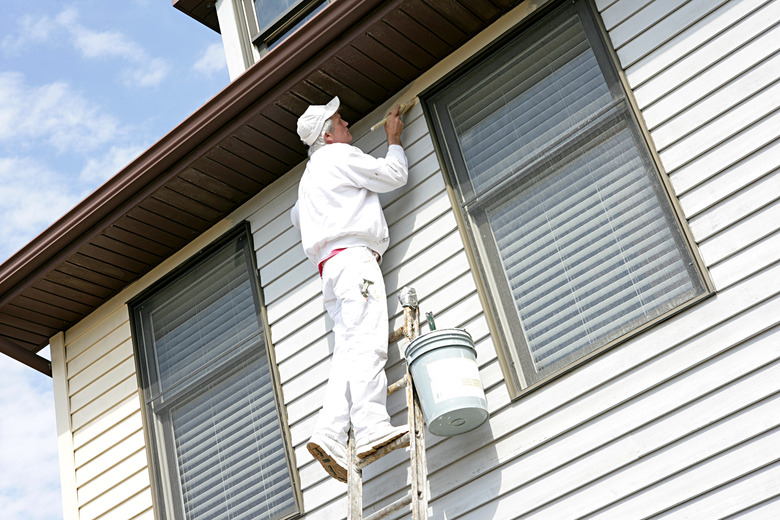Proper Angle For A Ladder
We may receive a commission on purchases made from links.
Ladders are an essential part of do-it-yourself projects, particularly for helping you reach areas you otherwise couldn't, such as working safely on your roof or cleaning your gutters. However, ladders are also a cause of many accidents. Using a ladder properly, choosing a safe ladder placement ratio and following adequate precautions can minimize the risks when using a ladder.
Proper Ladder Angle
Proper Ladder Angle
There are many different types of ladders, each better suited for a different type of job, including single pole ladders, extension ladders, platform ladders, A-frame ladders and rolling ladders. Any ladder that doesn't support itself, predominantly single pole and extension ladders, needs the correct ladder angle to keep it both sturdy and safe. The general rule to follow is maintaining an ideal ladder placement ratio of 75 degrees. This means the base of the ladder needs to be about one quarter of the ladder's length.
Following this 4-to-1 ladder rule, if a ladder is 20 feet off the ground, the base needs to be 5 feet from the wall. A quick way to check this is to stand with your feet touching the ladder's base. If you hold one arm forward, you should be able to touch the ladder's rungs at shoulder height. However, to get the angle as safe as possible, it's far more precise to measure the height and depth.
If a ladder is at a steeper angle, then it's liable to tip over backward. If the ladder is at a wider angle, the base is prone to slipping backward. An extremely tight angle on a ladder can put too much pressure on the ladder's sides, and they can break.
Safe Ladder Positioning
Safe Ladder Positioning
Always have your ladder's footing level. If the ground isn't level, you can use special ladder levelers to even out the feet. You want your ladders' feet to be grippy enough to hold the ladder in place adequately.
Choose a ladder that's long enough to extend past the point you're trying to reach. Under no circumstances do you want to extend your body over the end of a ladder. Similarly, you don't want to lean too far to either side of the ladder. If you're reaching over so far that your waist is outside the ladder's parameters, climb down and reposition your ladder.
If you're doing extensive work on a ladder, it's a good idea to tie it at the top. Choose a strong point to secure the ladder and not something flimsy like a gutter.
Ladder Safety Tips
Ladder Safety Tips
Ladder and extension ladder safety should be at the forefront of your mind when using any type of ladder. If possible, it's a great idea to have someone help you when using a ladder, so they can hold the base in place and keep an eye out for any potential dangers.
You want to always have three points of contact with the ladder, typically, a hand and two feet. Don't carry your tools in your hands. Instead, use a tool-belt to keep your hands free. Always check around the top of the ladder for any potential problems. You don't want to set up a ladder directly underneath overhead wires, for example.
Step Ladder Safety
Step Ladder Safety
Although step ladders tend to be shorter than extension ladders, you should still follow safety precautions with them. Always make sure all four feet are on even, solid ground. Make sure any interlocking mechanisms have engaged. Maintain three points of contact with the step ladder at all times and don't overreach. Always face the ladder.
